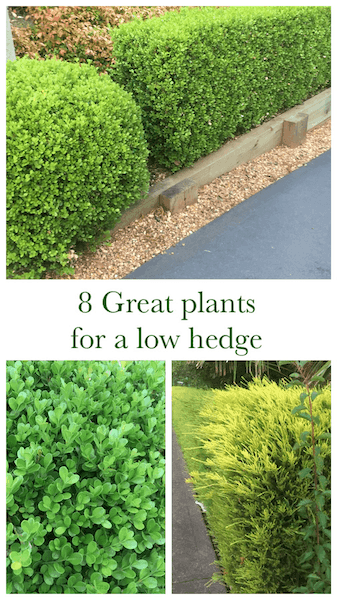
These are some of the best plant choices for creating a small hedge. Keeping in mind we live in West Gippsland, about 1hr East of Melbourne.
When I say low hedge I mean anything under 1.2m (4ft). Anything higher I would consider a screen plant. We do have a list of our favourite screen plants you can also check out.
BUXUS (BOX HEDGE)
Buxus are incredibly popular choices for a low hedge. I’m listing 3 choices that work very well in our local area. All 3 are frost hardy.
BUXUS SEMPERVIRENS (ENGLISH BOX OR BOXWOOD)
Probably the most commonly grown low hedge plant in the whole world. It has small glossy green leaves. There are flowers but these are very insignificant and rarely seen.
It looks great in formal gardens. It does benefit from regular feeding to maintain that lush green glossy look.
Avoid allowing it to dry out during hot dry summers, if the plants dry out completely they can be very difficult to bring back.
Growth is relatively slow, which keeps maintenance easy.
While establishing the hedge feed with plenty of organic material especially in spring, which is when the most growth occurs. This will help speed up the growth. Liquid seaweed fertiliser like seasol applied fortnightly will also help.
English box makes a nice hedge the optimal height is around 60cm (2ft)-1.2m (4ft). Space them 40cm (1’4″)-60cm (2ft) apart.
English box is a great hedge choice, however it does have one downfall that really irritates me. At certain times of year it smells like cat wizz! Drives me crazy!!
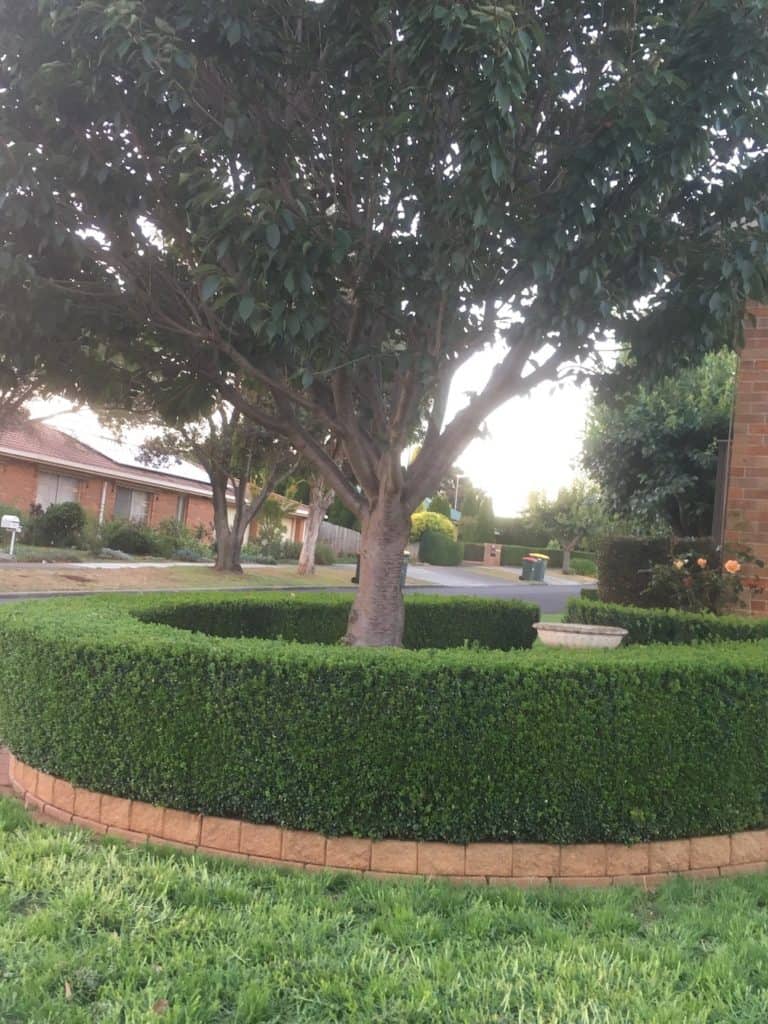
BUXUS SEMPERVIRENS SUFFRUTICOSA (DUTCH BOX)
Dutch box is a dwarf variety of English box. It has the same small glossy green leaves although slightly rounder.
Like English box, ensure that it doesn’t dry out and feed with plenty of organic materials during spring and autumn.
Being a dwarf variety it’s best used for really low hedges up to 60cm (2ft) high.
This is even slower growing than english box. Space the plants about 30cm (1ft) apart.
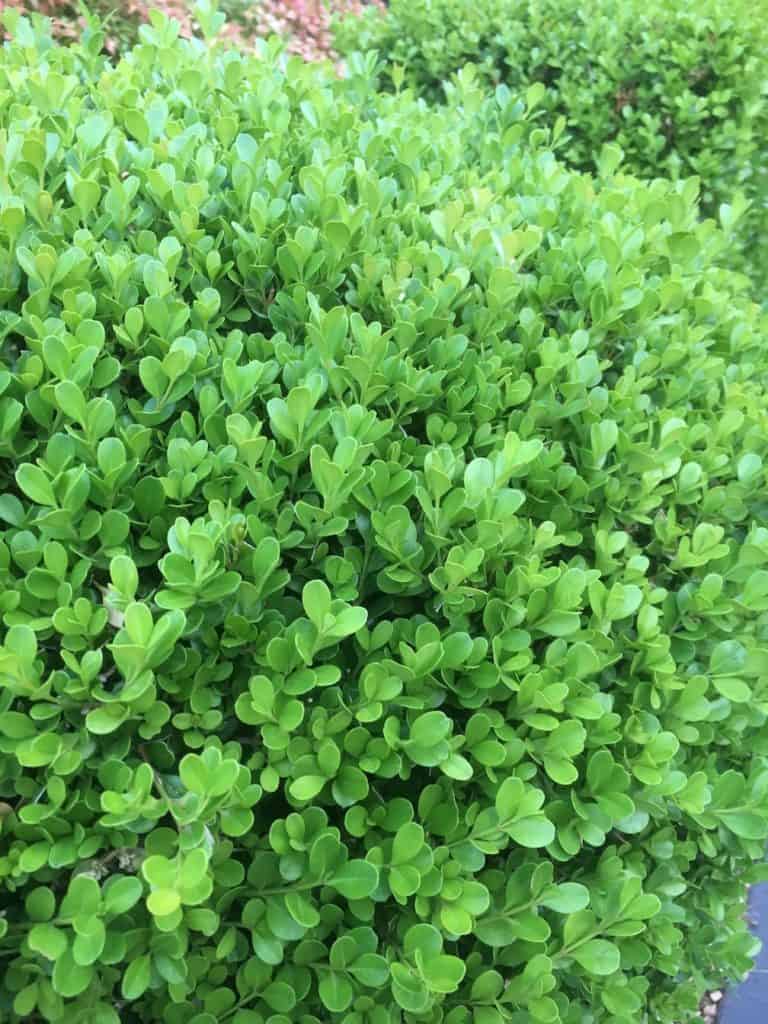

BUXUS MICROPHYLLA MICROPHYLLA (KOREAN BOX)
Buxus microphylla microphylla we know as Korean box. Some people know it as dwarf Japanese box or little leaf box.
This is my personal favourite of the box plants. It has small leaves with the colour changing from a lime green to almost yellow depending on the seasons.
I find Korean box to be more versatile in our Australian climate than the above box plants.
It can be grown in more shaded areas of the garden. We have ours on the south facing side of the house. In the southern hemisphere this is the shady side.
I also find it much more robust to dry weather.
Korean box can be used in formal hedging but also left barely touched where it only reaches a height of 60cm (2ft).
Like dutch box, I recommend it for very small hedges under 60cm (2ft)
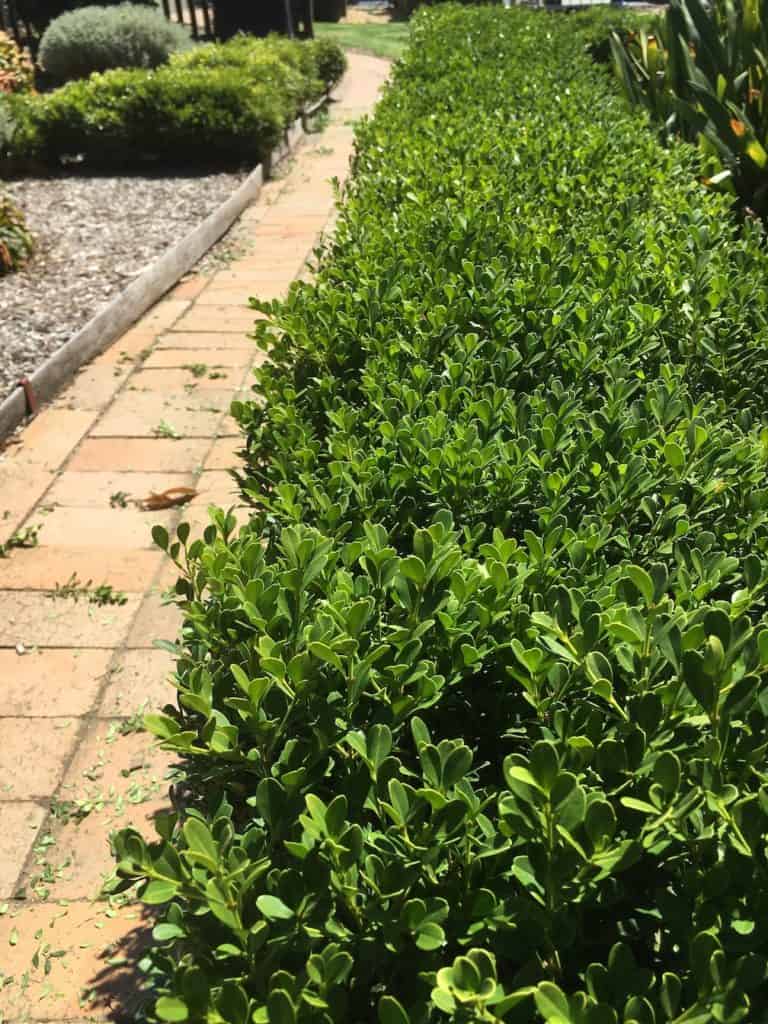
NANDINA DOMESTICA NANA (DWARF SACRED BAMBOO)
Nandina nana is a super versatile little shrub. It’s probably one of my absolute favourite plants!
I quite often get asked: “what’s a hedge plant I don’t need to trim?”
I always answer “a plastic one!” But if there was a living one, this is the closest thing. Dwarf nandinas only grow to about 1m (3.5ft) high by 1m (3.5ft) wide and this generally takes about 5 years.
Because of its height and width it vary rarely needs any pruning. However it will not have the formal look that can be achieved with the other plants on this list.
The beauty of these plants is their ever changing foliage colour. In summer they are a lime-yellow, but in winter they are a bright red.
Such awesome colour variations are vary rare in an evergreen plant!
Nandinas, like some of the other plants on this list need to be kept moist during hot dry summers.
To create your own little nandina hedge space the plants between 45cm (1.5ft)-60cm (2ft) apart.
We grow this in large numbers in our nursery. If you would like to try and propagate some yourself check out our nandina propagation guide.
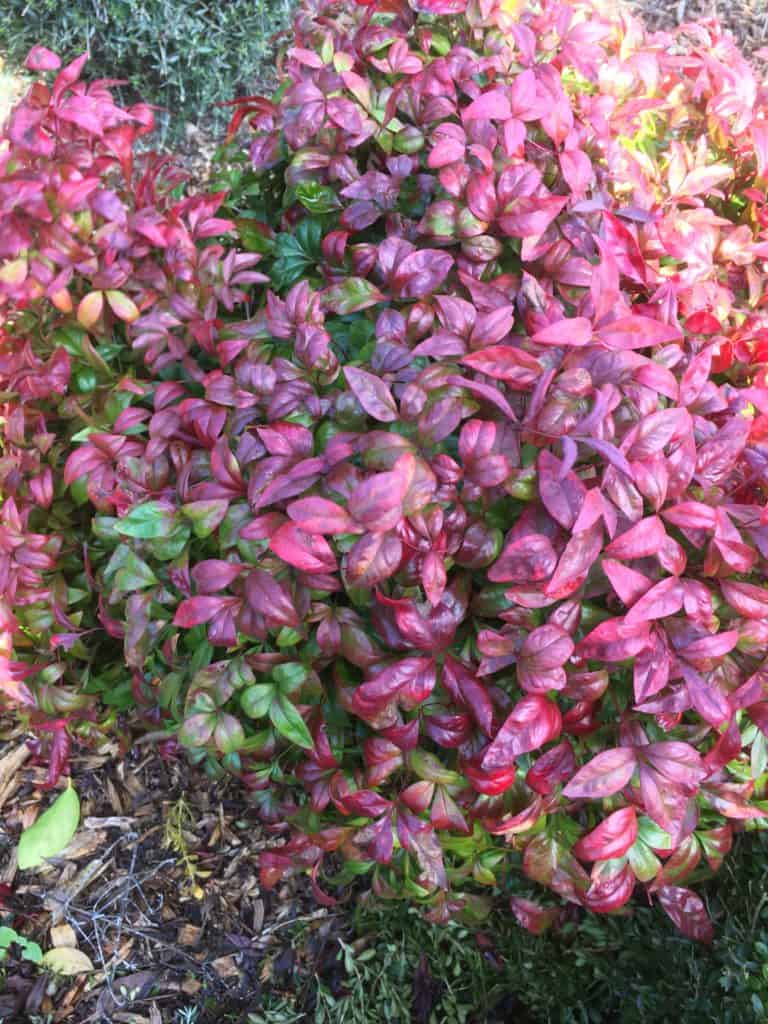
LONICERA NITIDA (DWARF HONEYSUCKLE)
Dwarf honeysuckle is a great substitute for a buxus (box) hedge. The leaves are much smaller but once established and trimmed it can look just as good.
The leaves are deep dark green. In extremely cold frosts the leaves will change to a purple colour. Don’t worry this is perfectly normal the plants are at no risk of dying.
It grows much faster than buxus (box). So for those of you who want to establish your hedges faster this will be a plus. But for those who don’t enjoy pruning their hedges this will be a minus.
A well manicured lonicera hedge will need regular pruning, it really does grow fast!!!
Dwarf honey suckle will grow to a height of 2m but I personally prefer it be kept at around 1m or little over 3ft.
I like to space the plants 30cm (1ft) apart. While you could easily space them further, I find that by spacing them closer together you can slow down the growth a little and make them easier to keep trimmed.
This is a really hardy hedge plant with no particular special requirements or feeding needed.
Lonicera is an easy plant to propagate. Click here to check out our lonicera propagation guide.
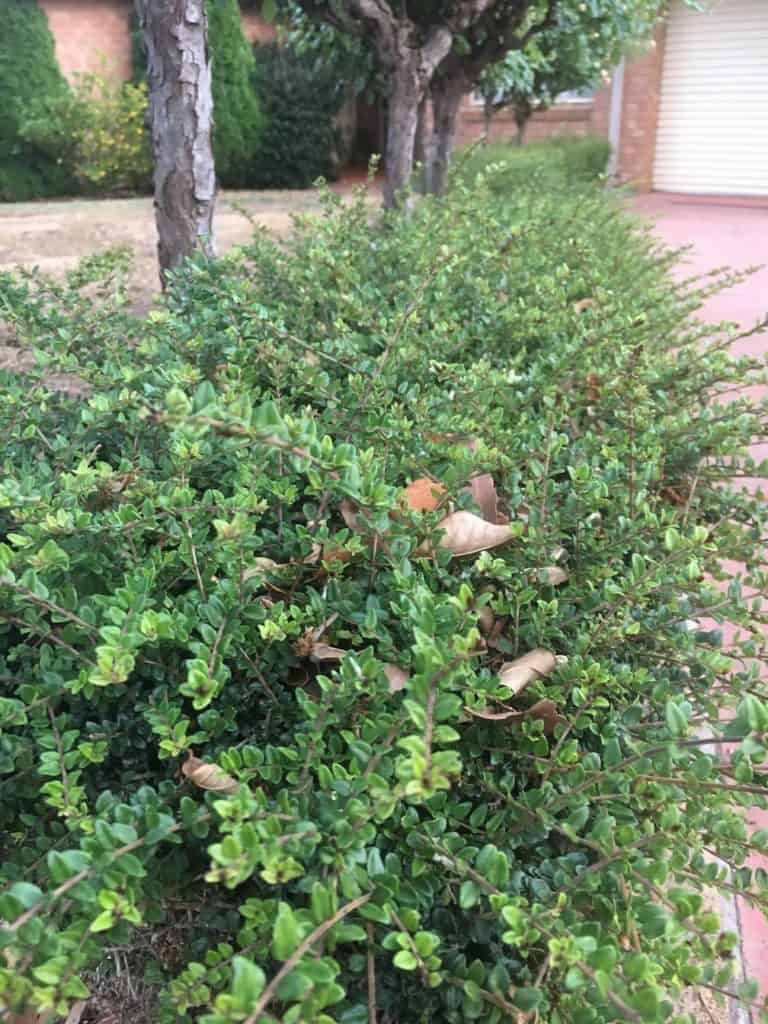
COLEONEMA PULCHRUM AUREA (GOLDEN DIOSMA)
Golden diosma was an incredibly popular plant here in Australia 15-20 years ago. Lately I feel it gets overlooked.
Golden diosma has brilliant soft golden foliage, hence the name. It produces dainty pink flowers.
Often grown as a small bush shrub for pops of foliage colour. It responds really well to pruning. A low golden hedge looks great!
Golden diosma only grows to 60-75cm (2-2.5ft) although it does spread to about a metre (a little over 3 foot). Therefore most of the pruning required on a golden diosma hedge is to the sides.
Space the plants between 30-45cm apart (1-1.5ft). Diosmas do grow quite quickly, just a quick pruning twice a year will keep your hedge looking great.
Prefers a position in full sun. Also moist soils are best as drying out over summer can be a problem.
We also grow golden diosma in our nursery. If you’re interested in propagating your own you can check out our diosma propagation guide.
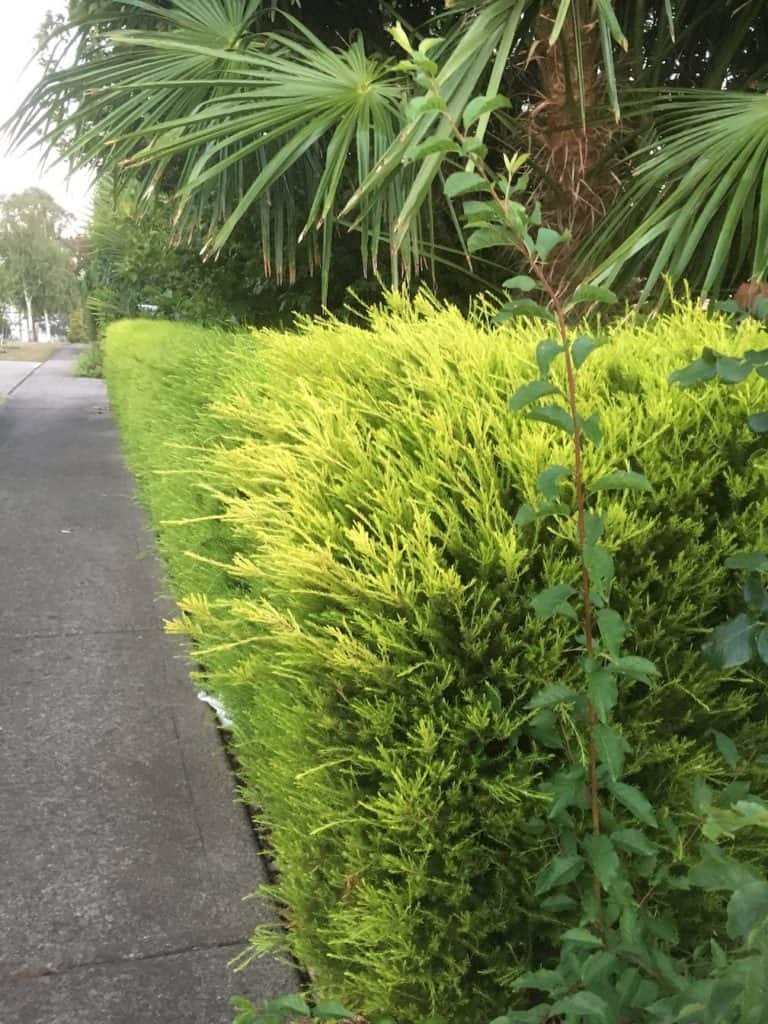
WESTRINGIA FRUTICOSA (NATIVE ROSEMARY)
Westringia is a great tough Australian native. This little beauty will thrive in dry sandy soils, even right on the coast with salt spray.
There are quite few varieties available to choose from. The main options are mauve (Westringia wynyabbie gem) or white flowers (Westringia fruticosa). Both can come with variegated foliage. I particularly like the mauve flowers on the variegated foliage.
Westringia can grow up to 2m (6.5ft) but if growing as a hedge I like to keep it anywhere from 90cm (3ft)- 1.2m (4ft).
Westringia grows nice and fast and requires pruning 2-3 times a year.
I usually space the plants 60cm (2ft) apart.
This is a great choice for coastal gardens, areas with lower rainfall or you just want a nice fast hedge!
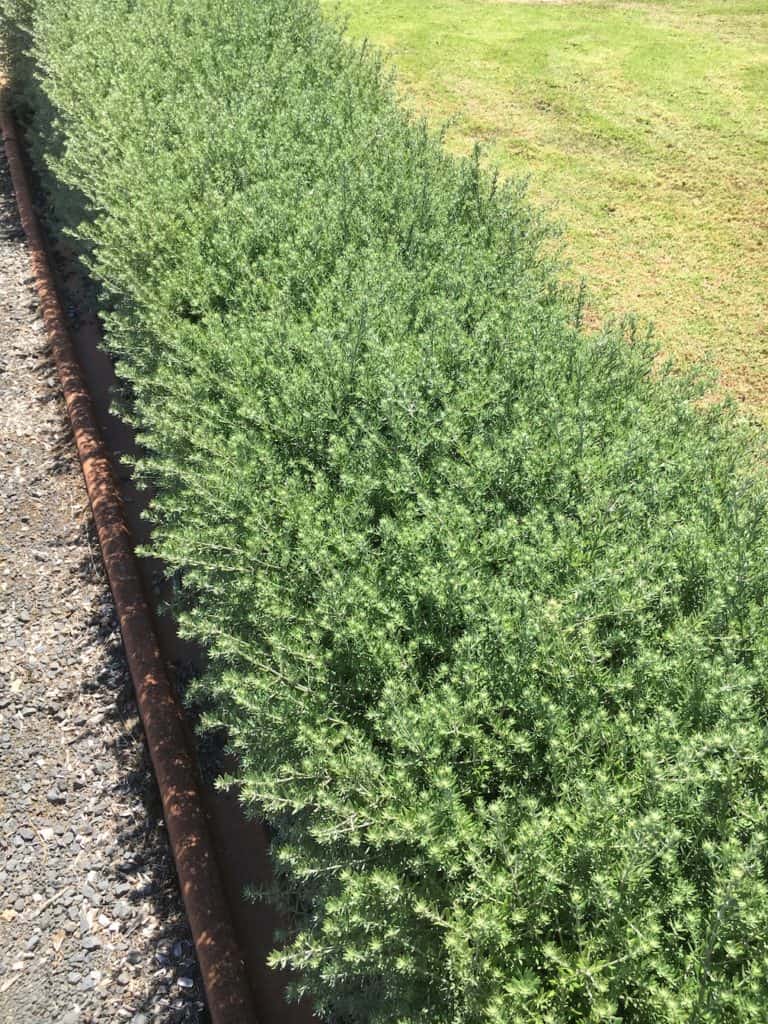
SARCOCCA CONFUSA (SWEET BOX)
Sweet box is an excellent hedge choice for shaded areas of the garden. A hedge bordering a path through a dense shaded area looks great and sweet box can help you achieve such a look.
The foliage is a deep dark glossy green. The leaves are much larger than a normal box plant. Although commonly known as sweet box, it is not actually a box plant at all.
While the foliage is very attractive, the real gem of this plant is the highly scented small yellow flowers produced in late winter.
Sweet box is quite slow growing and will only require a prune once a year when established.
The plant can grow to a height of 3m (10ft) however if using as a hedge it’s suitable for a height of 60cm (2ft)- 1m (3.5ft).
Space the plants 30cm (1ft) apart for a low 60cm (2ft) hedge. Place them up to 60cm apart for a 1m (3.5ft) hedge.
This is another plant we grow in the nursery. And you can find the sweet box propagation guide here.
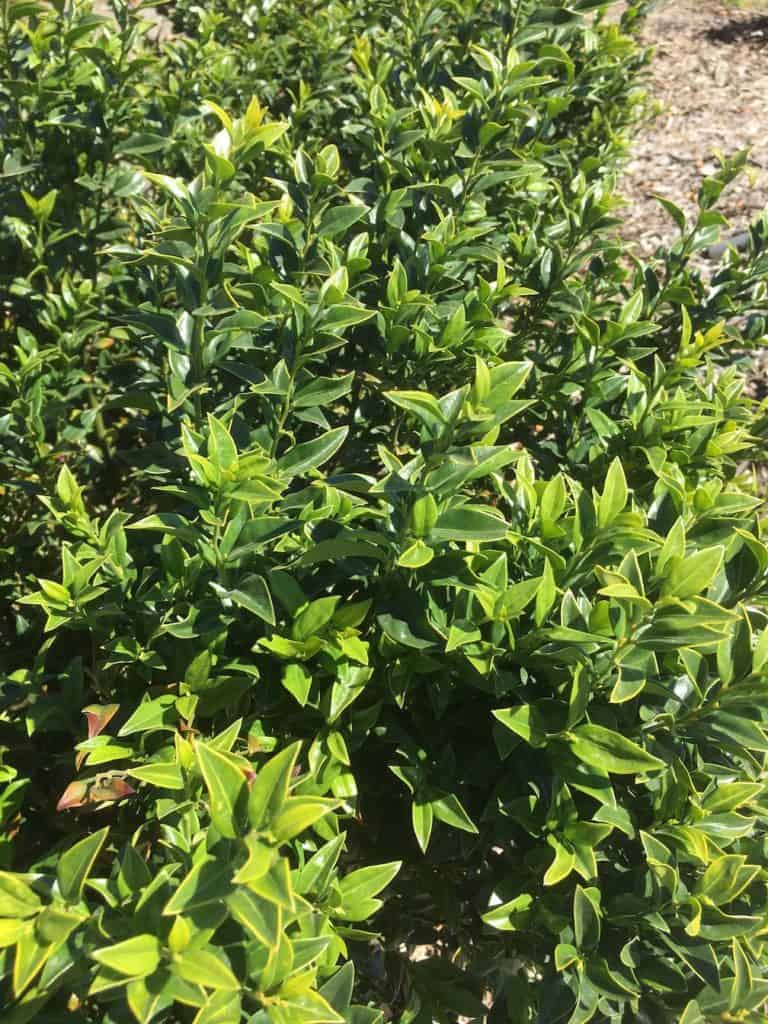
Conclusion
There you have it, 8 of our favourite plants for creating a low hedge.
We have plants perfect for a formal hedge in the buxus (Box) plants and the suggested replacement of dwarf honey suckle (lonicera) if faster growth is needed.
We have 2 colourful selections in the diosma and nandina.
A hedge that can be established in shade using sweet box.
And a great choice for coastal gardens, in native rosemary (Westringia)
We are always trying to add new content on things we know, things we are learning. If you would like to learn and grow with us please subscribe to our email list.
We do hope you’ve found a plant useful for your low hedge project, or at least got some new ideas. Thanks for reading. Happy planting 🙂
